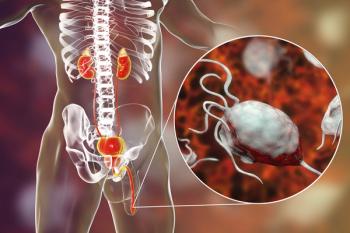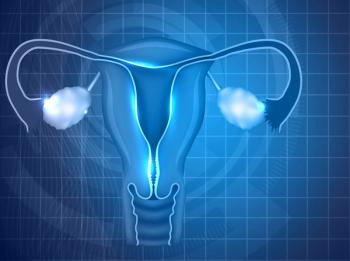
Data Show Disparities in HMA Use Among Myelodysplastic Syndrome Populations
Findings demonstrate a need to move beyond disease-related factors to address disparities in HMA treatment patterns among those with MDS.
Age-, sex-, and race-associated disparities in myelodysplastic syndrome (MDS) show that patients who are younger, male, and White have a higher likelihood of receiving treatment with hypomethylating agents (HMAs), according to findings from a retrospective study published in Blood Neoplasia.
The probability of receiving HMAs among patients aged 75 to 84 years was significantly lower vs those aged 65 to 74 years (adjusted OR [aOR], 0.81; 95% CI, 0.76-0.86); these odds were even lower for those who were 85 years or older (aOR, 0.41; 95% CI, 0.38-0.44). Female patients were significantly less likely to receive HMAs vs male populations (aOR, 0.81; 95% CI, 0.77-0.86). Additionally, patients who were Black (aOR, 0.70; 95% CI, 0.62-0.80) or identified as another race or ethnicity (aOR, 0.78; 95% CI, 0.68-0.90) experienced a lower probability of receiving HMAs vs those who were White.
Factors correlating with a higher likelihood of receiving HMAs included having 2 or 3 cytopenias (aOR, 2.08; 95% CI, 1.96-2.20) and undergoing bone marrow biopsy (aOR, 12.61; 95% CI, 10.78-14.74). Additionally, being a nursing home resident (aOR, 0.55; 95% CI, 0.47-0.63) and having prefrailty (aOR, 0.67; 95% CI, 0.59-0.76), mild frailty (aOR, 0.32; 95% CI, 0.28-0.37), or moderate or severe frailty (aOR, 0.19; 95% CI, 0.13-0.20) corresponded with a lower likelihood of receiving HMAs.
Compared with those who received azacitidine (Vidaza), those undergoing treatment with decitabine were less likely to complete a minimum of 4 treatment cycles (aOR, 0.70; 95% CI, 0.62-0.78). Those with 2 to 3 cytopenias experienced lower probabilities of completing at least 4 cycles of HMAs (aOR, 0.69; 95% CI, 0.61-0.78), whereas those with low transfusion dependence had a higher likelihood of completing 4 or more cycles (aOR, 1.31; 95% CI, 1.16-1.48). Those who resided in nursing homes had lower odds of receiving 4 or more cycles of HMAs (aOR, 0.64; 95% CI, 0.46-0.90).
“Our analyses revealed age-, sex-, and race-related disparities in the receipt of HMA even after adjusting for MDS-related clinical characteristics that are markers of disease severity (cytopenias and transfusion burden at diagnosis), frailty, and known socioeconomic determinants of disparity such as poverty, educational attainment, rurality, and availability of specialty physicians,” lead study author Sudipto Mukherjee, MD, from the Leukemia Program in the Department of Hematology and Medical Oncology at Taussig Cancer Institute of Cleveland Clinic and the Population Cancer Analytics Shared Resource of Case Comprehensive Cancer Center, wrote with coauthors in the publication. “Additionally, we report high discontinuation rates and suboptimal treatment (incomplete cycles), portending a poor outcome for these patients. Our work highlights the need to shift our approach beyond disease-related factors to recognize and narrow disparities in HMA treatment patterns in routine clinical practice to improve outcomes.”
Investigators of this retrospective cohort study aimed to evaluate factors associated with HMA use patterns among 7935 patients with MDS who received HMAs. The study included an analysis of national Medicare data from 2011 to 2014 to analyze treatment patterns in this population.
The study’s primary end point was HMA receipt. Secondary end points included patterns and duration of HMA use. The study population included beneficiaries of fee-for-service Medicare who were 66 years or older with a minimum of 1 inpatient or 2 outpatient MDS claims from 2012 to 2013.
Among patients who received HMAs, most underwent treatment with azacitidine (73%), were White (91.3%), and had 2 or 3 cytopenias (71.5%). Additionally, most patients in this group had transfusion dependency (71%), residence in regions classified as medium-high to high in poverty level (50%), low educational attainment (50%), and residence in counties with a population of higher than 250,000 (80.4%).
Among those who received azacitidine, 34% had discontinued treatment by the end of cycle 4 and approximately 50% discontinued therapy at the end of 6 cycles. In patients who received decitabine, 44.1% and 32.8% completed the first 4 and 6 treatment cycles, respectively.
In the azacitidine cohort, the mortality rate was 10% in the second cycle, 23% by the sixth cycle, and approximately 30% to 37% in each cycle beyond cycle 9. At the end of 24 treatment periods, approximately 5% of patients remained on treatment with azacitidine or decitabine.
Reference
Mukherjee S, Dong W, Gerds AT, et al. Disparities in real-world treatment patterns of hypomethylating agents among patients with myelodysplastic syndromes in the US. Blood Neoplasia. Published online August 6, 2025. doi:10.1016/j.bneo.2025.100156
Newsletter
Stay up to date on recent advances in the multidisciplinary approach to cancer.






















































































